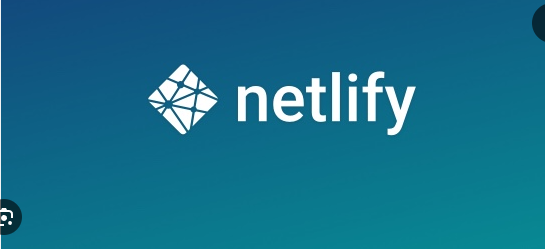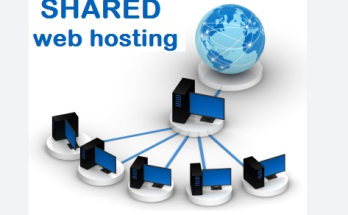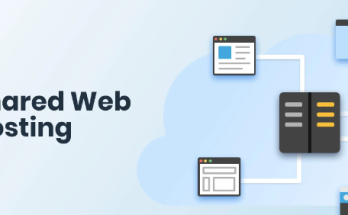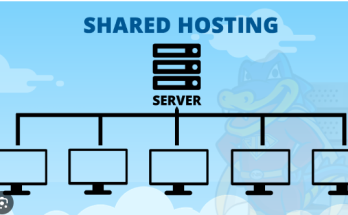I. Introduction to Netlify Hosting
- Brief overview of Netlify and its significance in modern web hosting.
- Advantages of using Netlify over traditional hosting solutions.
II. Getting Started with Netlify
- Signing up for a Netlify account.
- Explaining the dashboard and its functionalities.
- Connecting a repository (GitHub, GitLab, Bitbucket) to Netlify.
III. Understanding Netlify Features
- Continuous Deployment: Automating deployment via Git triggers.
- Custom Domains: Setting up and managing domain names.
- SSL Security: Importance and automatic SSL certificate provision.
- Split Testing and Rollbacks: Utilizing A/B testing and reverting changes.
- Forms and Functions: Integrating forms and serverless functions.
IV. Deploying Your Site on Netlify
- Step-by-step guide to deploying a website on Netlify from a Git repository.
- Configuring build settings for different frameworks (React, Vue, Angular, etc.).
- Handling build errors and troubleshooting common deployment issues.
V. Optimizing Performance and Scalability
- CDN Integration: Understanding Netlify’s Content Delivery Network.
- Asset Optimization: Minification, compression, and caching strategies.
- Scalability and Global Availability: Leveraging Netlify’s edge network.
VI. Advanced Netlify Configurations
- Redirects and Rewrites: Managing URL redirects and custom rules.
- Environment Variables: Securing sensitive data and configuring environments.
- Deploy Previews: Utilizing branch deploys for testing and collaboration.
VII. Collaborative Workflows with Netlify
- Team Collaboration: Managing team access and permissions.
- Version Control Integration: Workflow with Git branches and pull requests.
- Deploy Previews for Collaboration: Showcasing changes before merging.
VIII. Monitoring and Analytics on Netlify
- Site Analytics: Reviewing traffic and performance metrics.
- Error Tracking: Identifying and resolving issues with Netlify’s tools.
IX. Integrations and Extensibility
- Third-Party Integrations: Services that can be integrated with Netlify.
- Netlify API: Harnessing the power of Netlify through its API.
X. Conclusion
- Recap of the benefits and functionalities of Netlify.
- Encouragement to explore and utilize Netlify’s full potential.
Title: Unlocking the Potential of Netlify Hosting: A Comprehensive Guide
Introduction:
In the ever-evolving landscape of web hosting services, Netlify stands out as a powerful and user-friendly platform that has revolutionized the way websites are hosted and deployed. This guide aims to provide a comprehensive understanding of Netlify hosting, detailing its features, benefits, setup process, and optimization strategies.
1. Understanding Netlify:
Netlify is a cloud-based hosting and automation platform that simplifies web development workflows. It offers an all-in-one solution for deploying modern websites and applications, combining hosting, continuous deployment, and serverless functionalities.
- Overview of Netlify’s key features:
- Continuous Deployment: Explaining how Netlify automatically builds and deploys sites from Git repositories.
- CDN (Content Delivery Network): Discussing the advantages of Netlify’s global CDN for faster content delivery.
- Serverless Functions: Highlighting the ability to create serverless APIs and functions effortlessly.
- Forms and Identity: Exploring built-in form handling and user authentication functionalities.
2. Getting Started with Netlify:
- Account Creation and Dashboard Overview: A step-by-step guide on signing up for a Netlify account and an overview of the dashboard’s interface and functionalities.
- Connecting a Git Repository: Detailed instructions on linking a Git repository (GitHub, GitLab, Bitbucket) to Netlify for automatic deployments.
- Initial Site Deployment: Explaining how to deploy a new site or an existing project to Netlify and configuring essential settings.
3. Advanced Features and Customizations:
- Custom Domains and HTTPS: Guidance on setting up custom domains and enabling secure HTTPS connections using Netlify’s built-in SSL certificates.
- Environment Variables: Exploring the use of environment variables for configuration and secrets management.
- Redirects and Rewrites: Demonstrating how to manage redirects and URL rewrites for enhanced site performance and SEO.
- Split Testing and A/B Deployment: Overview of Netlify’s capabilities for conducting A/B tests and deploying multiple versions of a site.
4. Optimizing Performance and Workflow:
- Asset Optimization: Explaining how Netlify optimizes assets (images, CSS, JavaScript) automatically for faster loading times.
- Pre-rendering and Server-Side Rendering: Discussing strategies to leverage pre-rendering and server-side rendering for improved SEO and user experience.
- Workflow Automation with Netlify CI/CD: Detailing how Continuous Integration and Continuous Deployment (CI/CD) workflows can streamline development processes.
5. Scaling and Collaboration:
- Collaborative Features: Discussing collaboration tools within Netlify, including team management, role-based access, and deployment previews for team collaboration.
- Scalability and Performance Monitoring: Tips for scaling sites hosted on Netlify and utilizing performance monitoring tools to optimize site speed and reliability.
Conclusion:
Netlify’s hosting platform offers a powerful suite of features that cater to both beginners and experienced developers. Its simplicity, combined with advanced functionalities, makes it an ideal choice for hosting modern web projects. By following the steps outlined in this guide and exploring its various capabilities, users can harness the full potential of Netlify hosting for their websites or applications.
- Overview of Netlify’s key features:
Title: Unveiling the Power of Netlify Hosting: A Comprehensive Guide
Introduction (200-250 words)
Introduce the concept of web hosting and its importance in today’s digital landscape. Highlight the significance of choosing the right hosting provider and segue into the emergence of Netlify as a leading hosting solution.
1. Understanding Netlify (300-350 words)
- Define Netlify and its core features.
- Discuss how Netlify simplifies the process of deploying websites and applications.
- Highlight its focus on automation, scalability, and ease of use.
2. Setting Up with Netlify (300-350 words)
- Walk through the steps of creating an account and setting up a new project on Netlify.
- Discuss the user interface and how to navigate it effectively.
- Explain the options available for deployment (drag and drop, Git integration, CLI).
3. Key Features of Netlify Hosting (500-600 words)
- Explore Netlify’s CDN (Content Delivery Network) and its impact on website performance.
- Discuss continuous deployment and integration options.
- Explain serverless functions and how they enhance website functionality.
- Touch upon forms, identity management, and other advanced features offered by Netlify.
4. Optimizing Performance on Netlify (400-500 words)
- Delve into best practices for optimizing website performance on Netlify.
- Discuss caching strategies, asset optimization, and image compression.
- Explain how to leverage Netlify analytics to monitor and enhance site performance.
5. Security Measures with Netlify (300-350 words)
- Detail the security features provided by Netlify (HTTPS, DDoS protection, etc.).
- Discuss best practices for securing websites hosted on Netlify.
- Highlight how Netlify handles security patches and updates.
6. Scalability and Flexibility (250-300 words)
- Discuss Netlify’s scalability options for websites experiencing increased traffic.
- Explain how Netlify accommodates different project sizes and types.
- Highlight any limitations or considerations for scaling on Netlify.
7. Integrations and Ecosystem (250-300 words)
- Discuss integrations with other tools and services (CMS, frameworks, etc.).
- Highlight the compatibility of Netlify with various development ecosystems.
8. Customer Support and Community (200-250 words)
- Discuss the support options provided by Netlify (documentation, community forums, support tickets).
- Highlight the benefits of being part of the Netlify user community.
Conclusion (150-200 words)
Summarize the key points discussed throughout the article. Reinforce the benefits of using Netlify hosting and encourage readers to explore and leverage its capabilities for their projects.



